Santiago Bernabéu: Real Madrid
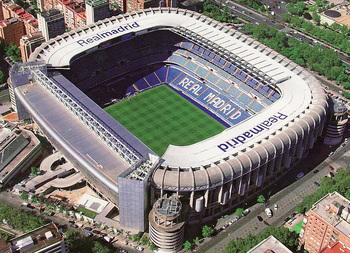
By Nguyentoan19691 (Own work) [CC BY-SA 4.0], via Wikimedia Commons
It is no exaggeration to suggest that Real Madrid are one of the most famous football clubs in the world. Along with the likes of Liverpool, Manchester United, Barcelona and Bayern Munich, Real are considered to be amongst the footballing elite and a truly global enterprise. The Bernabéu is, consequently, one of the most famous stadiums in the world. It has hosted the final of the European Cup five times and has also been used for matches in the European Nations’ Cup and the 1982 FIFA World Cup. In short, if Real Madrid are footballing royalty then the Bernabéu is a palace like virtually no other.
The stadium opened in 1947 and cost over 1.5 million Euros to build, replacing the club’s former ground, the Estadio Chamartín. Unbeknownst to many younger fans today, it wasn’t always called the Santiago Bernabéu. Instead it was originally named the Nuevo Estadio Chamartín and its name wasn’t changed until the first major renovations to the ground took place in 1955. It was expanded to welcome 125,000 spectators, making it the stadium with the largest capacity from all of the participants of the then newly established European Cup. The General Assembly of Members Compromisaros has decided earlier in the year to reward the then club President for his vision in creating such a modern day colosseum, naming it after him. Ever since it has been called the Santiago Bernabéu.
Stats
| Santiago Bernabéu Stats | |
|---|---|
| Year Opened | 1947 |
| Capacity | 81044 |
| Average Attendance | 73081 |
| Record Attendance | 128000 (Real Madrid v D Zagreb (1974)) |
| Pitch Size | 105 x 68 (7140) |
| Nickname | Bernabeu |
| Former Name | Nuevo Estadio Chamartín |
| Owner | Real Madrid |
| Clubs Hosted | Real Madrid |
| First Fixture | Real Madrid v Os Belenenses (14/12/1947) |
| Real Madrid Stats | |
|---|---|
| Year Founded | 1902 |
| Nickname | Los Blancos, Los Merengues, Los Vikingos |
| Rivals | Barcelona, Atlético Madrid, Bayern Munich |
| Previous Stadiums | Campo de O'Donnell, Campo de Ciudad Lineal, Estadio Chamartín |
| Kit | White (Home) / Dark Blue (Away) / Teal (Third) |
| Training Ground | Real Madrid City |
| Shirt Sponsor | Emirates |
| Team Owner | Real Madrid Socios |
| Record Goalscorer | Cristiano Ronaldo (359) |
| Record Appearances | Raúl (741) |
Santiago Bernabéu Photos
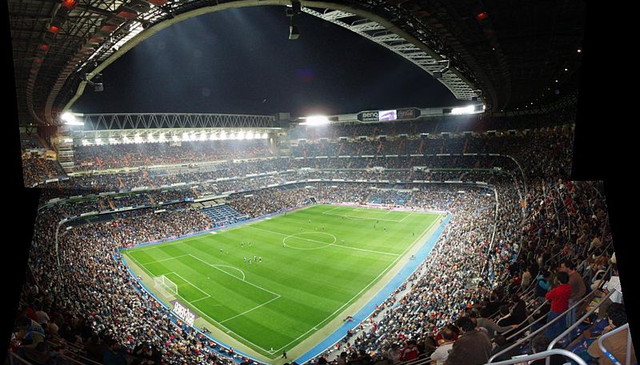
By Rafa Otero [CC BY-SA 2.0]
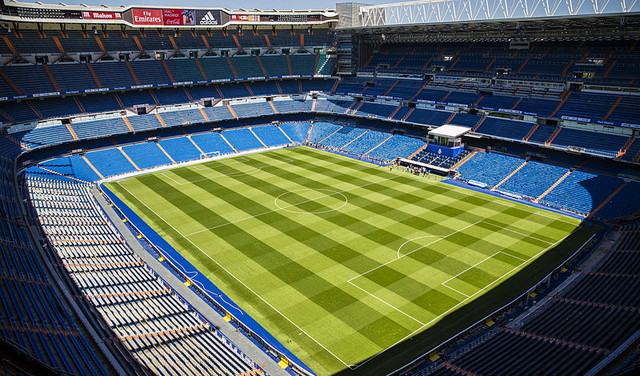
By Diriye Amey from Locarno
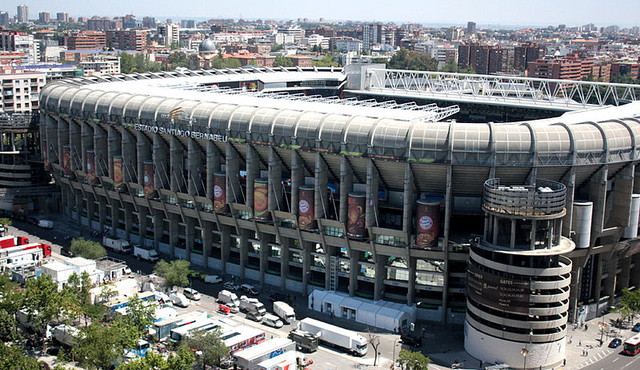
By Gustavo Bravo (Estadio Santiago Bérnabeu (Mayo 2010)) [CC BY-SA 2.0]
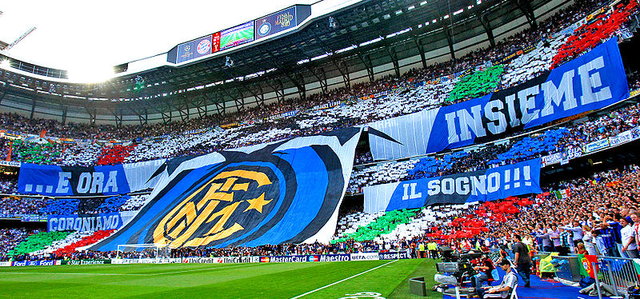
By oscar federico bodini from Milan
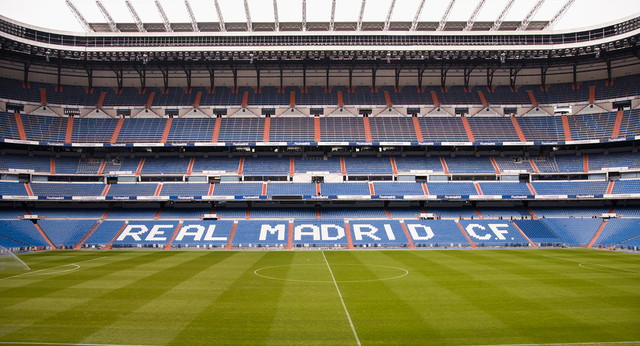
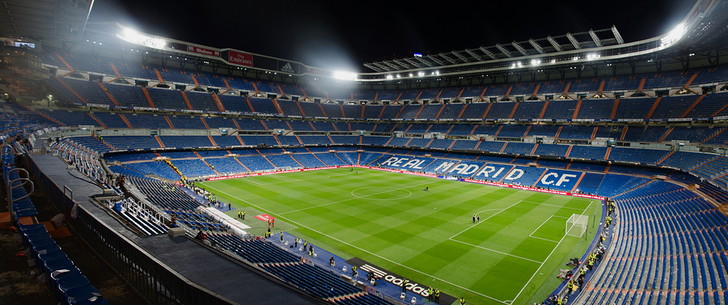
Santiago Bernabéu Seating Plan and Where to Sit

The Bernabéu is the quintessential modern stadium that is built in a ‘Bowl Style’ rather the more old school ‘English Style’ of having four distinct stands on each side of the pitch. The stadium is still basically four-sided, however, so here’s a little bit of information about each side:
- Fonde Nord – The North Stand is, like the rest of the stadium, absolutely massive. It’s so big, in fact, that when it was originally expanded in the mid-1990s the pitch suffered due to a lack of light. Away fans normally sit in the North-East corner of the ground.
- Lateral Este – The East Stand was expanded and renovated between 2001 and 2006, costing around €127 million. That’s more than the ground as a whole originally cost to build.
- Fondo Sur – The South Stand is also considered to be the stadium’s main stand even though it has the smallest capacity of all sections within the ground. It’s where the dugouts are, though, as well as the changing rooms and a large section of executive seating.
- Lateral Oeste – This is pretty much a replica of The North Stand and is behind the other goal.
Real Madrid Ticket Prices
Ticket pricing for foreign leagues is always slightly tricky to understand. Each county has their own way of working and match ticket costs can change from week to week. Because of the size of stadiums like the Bernabéu they don’t really tend to do different pricing for children or concessions, instead having cheaper sections dotted around the ground.
To buy a season ticket for Real Madrid you have to be a member, or socio. You don’t have to buy a season ticket, however, so there is a different price of match tickets for socios and for members of the general public. Here are the cheapest and most expensive tickets for each section of the ground, presuming you are not a socio:
- West Stand: €40 – €130
- East Stand: €40 – €130
- North Stand: €30 – €90
- South Stand: €30 – €90
How To Get Real Madrid Tickets
Despite the frankly ludicrous size of the stadium it can be quite tricky to get tickets for important matches at the Bernabéu, such as El Classico or the Madrid derby. For other games, however, you’re essentially left with two major choices: Call the club’s ticket office directly and ask for an English speaking person (presuming you’re not fluent in Spanish, obviously) or get your tickets through the club’s official website. You can buy tickets from other sources online but do be wary when doing so as not all of them are official partners of Real Madrid.
Where to Buy
Getting To Santiago Bernabéu
Madrid is the capital of Spain, so there are a whole host of ways to get to the city and then get to the ground. Here are some of the more conventional routes you’ll want to look at:
Train – A train journey from London to Madrid will take just under fourteen hours, so you might want to consider a different initial method of travel. Once you’re in the city, however, the Metro is an excellent way to get around. The stadium has its own stop, imaginatively called Santiago Bernabéu, which is just after Nuevos Ministerios on Line 10, the dark blue line. Nuevos Ministerios is also the closest station on Spain’s internal rail network and is about a ten minute walk from the ground.
Bus – Buses 14, 27, 40, 43, 120, 147 and 150 all travel along Paseo de la Castellana and stop outside of the stadium, so they’re the ones you’ll be watching out for if you want to get the bus to the ground.
Car – How easy or otherwise it is to drive to the Santiago Bernabéu really dependants on where you’re coming from. Owing to the complicated nature of driving from abroad our best advice is to get yourself a sat-nav and put the address – Av. Con-cha Espina 1, 28036, Madrid – into it.
By Air – Madrid – Cuatro Vientos Airport is the closest to the city at about eighteen kilometres away. It’s served by plenty of international airports too, it’s the best place to aim for. At twenty-one kilometres away from the centre of the city is Madrid – Barajas Airport. This serves both international and domestic airports and is therefore where you’ll land if you’re coming from elsewhere in Spain.
Taxi – A taxi from the Madrid Atocha Railway Station to the Santiago Bernabéu will cost you about €10 and take around fifteen minutes to complete its journey. Traffic can be notoriously bad in the city, however, so it might take longer and therefore cost more.
Parking Near Santiago Bernabéu
Parking in Madrid is… complicated. There are numerous public and private car parks near to the ground where you can park, but on-street parking is tricky and likely to result in a fine or, worse, your car being towed away if you don’t know the rules and regulations of the city.
Useful Resources
Santiago Bernabéu Hotels
As the capital of Spain and a popular tourist attraction it’s reasonably safe to say that there are more than a few hotel options in the city of Madrid. Here are some of our favourite ones that you might want to consider for your stay:
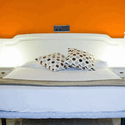
Aparthotel G3 Galeón - £50+
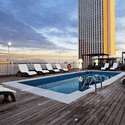
Holiday Inn Madrid Bernabéu - £75+
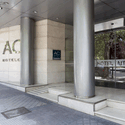
AC Hotel Aitana by Marriott - £90+
Pubs and Bars Near Santiago Bernabéu
Spain is a city full of wonderful bars and places to enjoy some tapas whilst you watch sport or just watch the world go by. Here are some of our favourite places in Madrid to head to for a drink before the game:
El Parnasillo del Príncipe
James Joyce Irish Pub
Luckia Sport Cafe Madrid
Facilities
The vast size of the stadium means that there are plenty of facilities at the Bernabéu for your enjoyment. From places to buy beers and snacks through to spacious toilets, the ground has numerous concourses on each level.
Hospitality
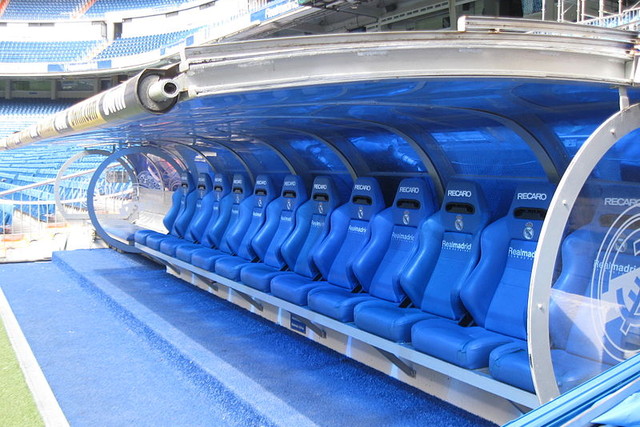
We’re not going to understate it: There are loads of hospitality options at the Bernabéu. Don’t know if we’ve mentioned but the place is massive, so the hospitality packages reflect the size and distinction of such a world-renowned location. Here are some of the choices you might want to consider:
- Sala Copas de Europa – Do you fancy having a pre-match bite to eat in the shadow of Real Madrid’s European Cups? Thought you might. Located in the lower section of The West Stand, this hospitality suite is one of the closest to the pitch and offers an annexed hospitality area, food and hostess services.
- The Asador Restaurant – The food here is first class, as is the service. You’ll also enjoy excellent views of the pitch, particularly the goal in front of The South Stand.
- Sala de Trofeos – Perhaps you find the idea of eating in the presence of the club’s European Cups a little intimidating. In that case you might prefer the hospitality experience of the club’s trophy room, where the domestic trophies that Real have won over the years are displayed. You’ll also get fed, watered and enjoy an excellent view of the pitch from the second-tier of The West Stand.
Private Hire
Is there a more impressive place to host an event than the Santiago Bernabéu in the capital of Spain? Probably not. You can host presentations, meetings, lectures, dinner dances, conventions or even matches on the club’s famous turf. You can hold events for anywhere from ten through to 7000 people in any number of the club’s spaces and lounges.
Stadium Tours & Museum
Tours of the Santiago Bernabéu are available every day of the year except for Christmas Day and New Year’s Day. On match days you can do a tour up until five hours before kick off. You’ll get to see some of the best sights in football on the tour, including a panoramic view of the ground, the the Presidential box, the home dressing room and the tunnel down to the pitch side and the dugouts. You’ll also get to spend time in the club’s ‘History Room’, where you can learn about Real Madrid’s famous teams of the past.
Tours run from 10am until 7pm Monday to Saturday and from 10.30am until 6.30pm on Sundays and public holidays. Don’t forget that public holidays are different in Spain to England! It’s a self-guided tour with the aid of listening device, so it can take as long as you’d like it to to complete your journey around the ground. The cost for none Madridista card holders is €19 for adults and €13 for children up to 14. As disabled supporters can’t access all parts of the tour they get in for free to the areas that are wheelchair accessible.
About Real Madrid
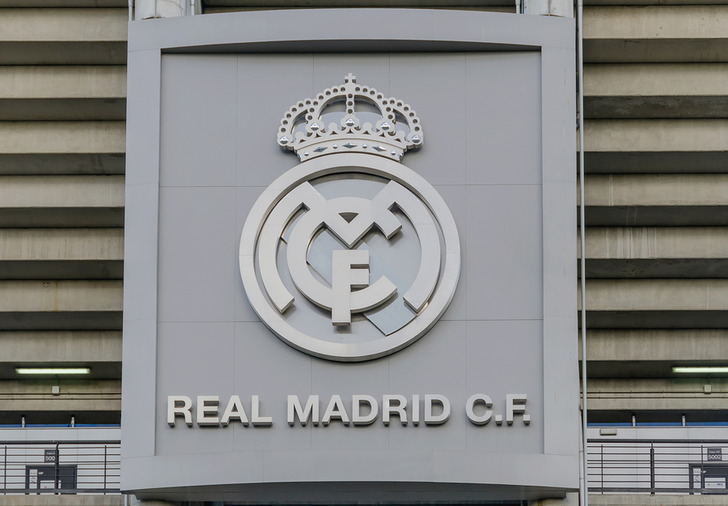
Where exactly do we start when discussing the history of Real Madrid? formed as Madrid Football Club in 1902, the club was fortunate enough to have the right to call itself Real, or Royal, when King Alfonso XIII bestowed the honour on them in 1920. Considered to be the most valuable team in the world in any sport, Real is owned and operated by the club’s fans and has been ever since it was formed. Not exactly a tricky thing to get your head around when you consider that the Spanish side is also one the most supported sports teams anywhere in the world. Along with Athletic Bilbao and Barcelona, Real Madrid are one of three founding members of the Primera Division that have the joy of being able to say that they’ve never been relegated from Spain’s top-flight.
Real’s first bout of sustained success came about in the 1950s when the club won the European Cup five times in a row, reaching the final of the competition seven times. They achieved the same success in the league, winning it for five out of seven seasons. Those five La Liga trophies line up alongside another 27 to make up the club’s record 32 Spanish league titles. They’ve also won 19 Copa del Rey trophies, nine Supercopa de Espanas and one Copa de la Liga. They’ve also won two EUFA Cups, two UEFA Super Cups and a FIFA Club World Cup. In 2014 they won the European Cup for a record tenth time, completing La Decima.
Santiago Bernabéu History
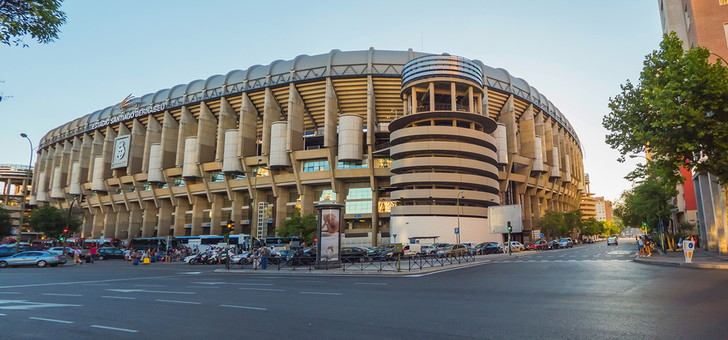
The ground is located in the Madrid district of Chamartin and was built not far from the Estadio Chamartín that the club called home before moving to the Bernabéu. The ground has undergone numerous renovations over the years, starting in the 1950s when it was expanded to increase the capacity. The next major redesign came about in the 1980s when the club was due to host some matches for the 1982 World Cup. The work lasted for just under a year and a half and cost 704 million pesetas, back in the day before the Eurozone took over the country’s currency. The changes involved the addition of roofing, the reduction of the capacity and the remodelling of the entire stadium’s facade.
More renovations took place during the 1990s, with more the 20,000 new seats installed and an increasing in the height of the stadium from 22m to 45m. A retractable roof was also installed to ensure the fans were protected from the elements when it got a bit colder in winter. At the end of the 1990s the stadium went to being all-seater, reducing its capacity to just over 75,000. During the new millennium Florentino Perez took over as President of the club and began his reign by promising a ‘master plan’ of improving the ground and the quality of the facilities therein. €127 million was invested over five years resulting in the ground being made a UEFA Elite Stadium officially in 2007. The most recent change came in 2011 when the capacity was increased ever so slightly to 81,044.
Future Developments
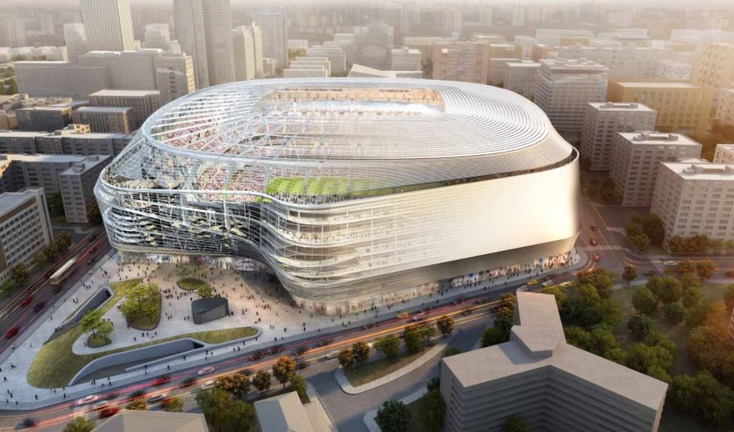
Further expansion and development plans were announced in 2014, with Perez declaring his desire to make the Bernabéu ‘the best stadium in the world’. In truth it’s more likely that he just wants it to be better than the Nou Camp, with Barcelona’s ground currently the biggest in Spain. The developments are ongoing but began in 2019, and are expected to cost in the region of €525 million, with Perez intending to cover at least half the cost by selling naming rights to the ground.
